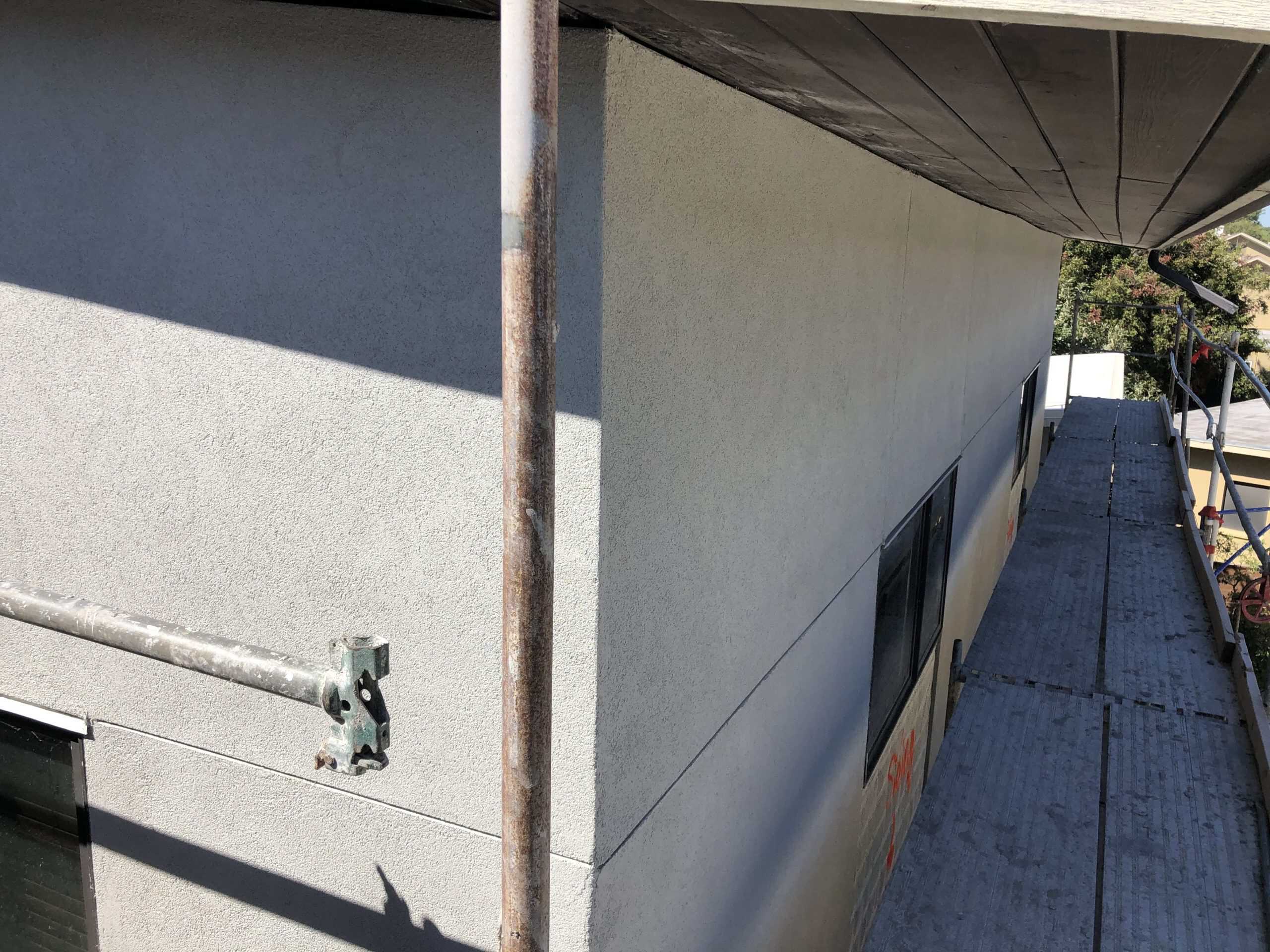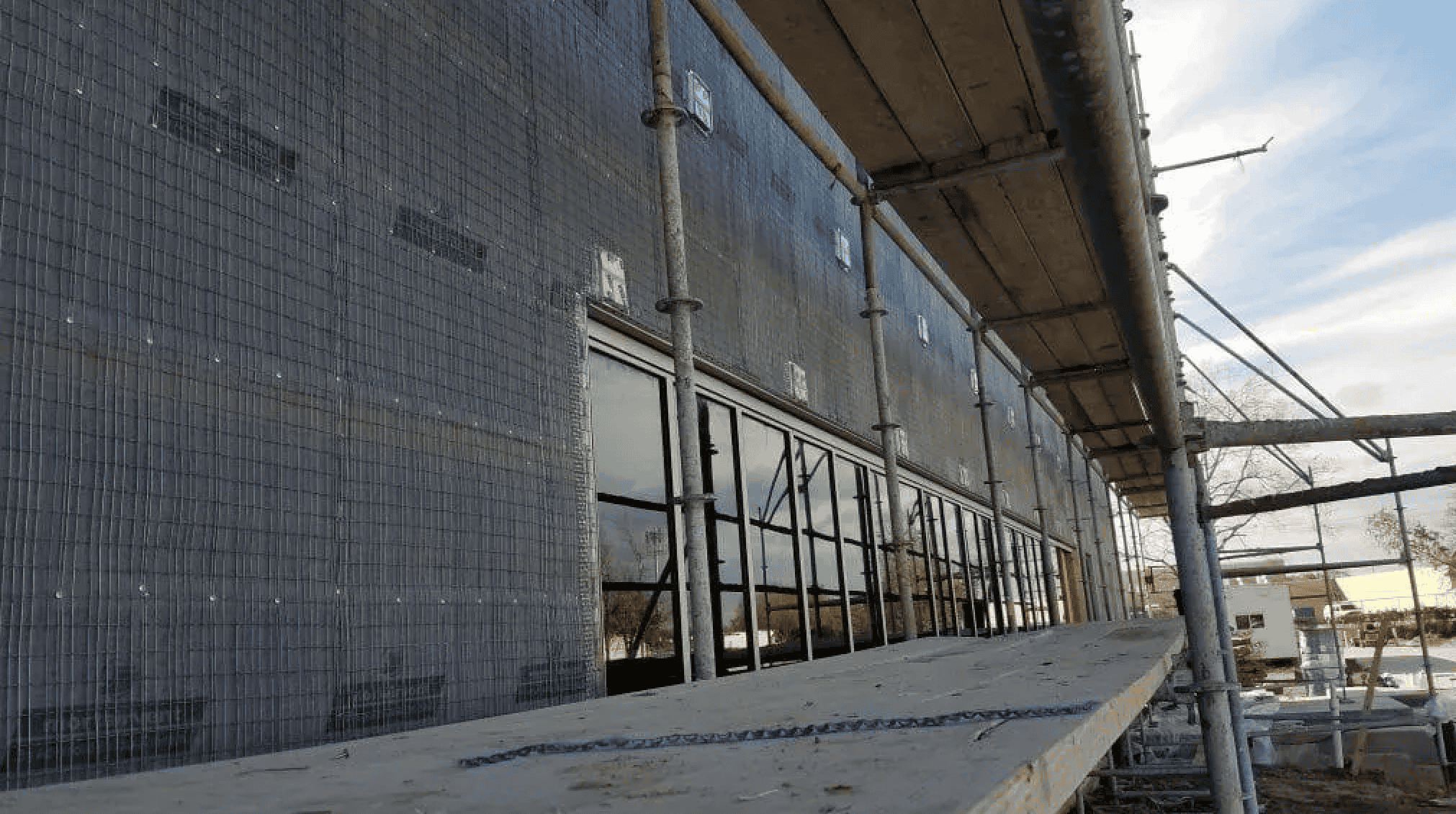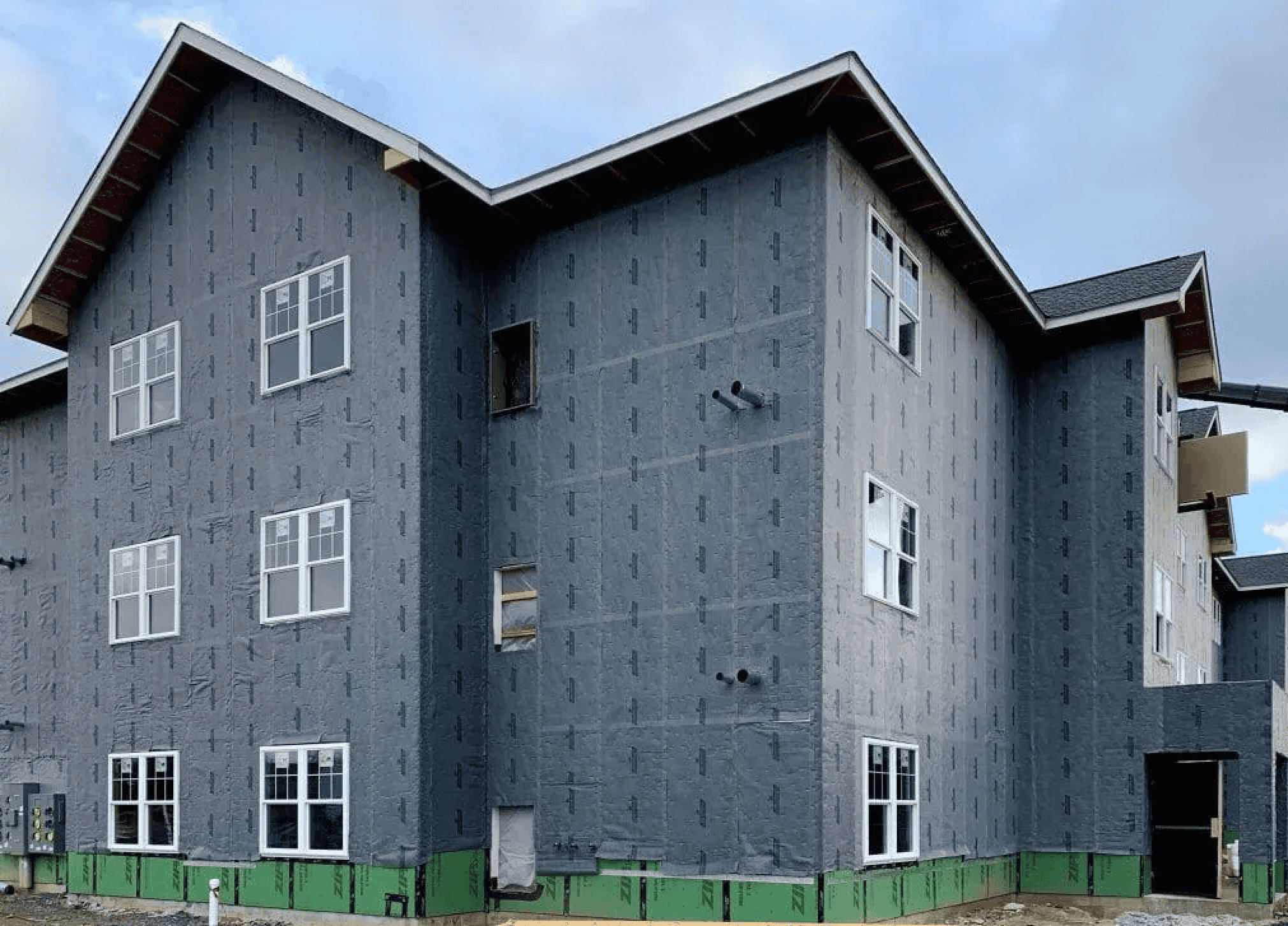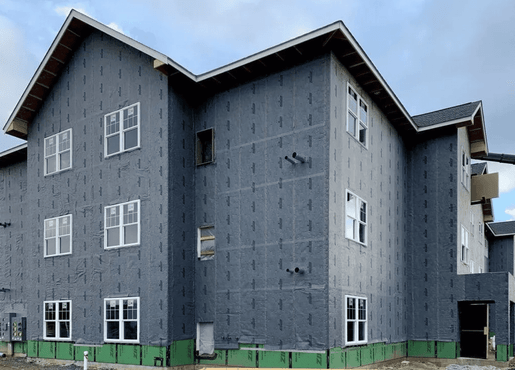Posted by Spycor Building on Oct 1st 2025

The exterior wall of your home is under constant siege. It is the single most important defense line against the elements—not just rain and wind, but the relentless, microscopic forces of moisture control in walls, vapor diffusion, and thermal bridging that silently degrade structural integrity and inflate utility bills. For decades, building science accepted wet walls as inevitable, leading to wood rot, mold, and costly premature failure.
Today, this paradigm has been fundamentally shifted by the widespread adoption of the rainscreen principle. Moving beyond basic siding, a rainscreen system creates a deliberate, ventilated air gap behind the exterior cladding, transforming the wall into a dynamic, defensive assembly. This is not merely an upgrade; it is an essential investment for anyone building or renovating a high-performance, energy-efficient home.
If your goal is to achieve true building envelope resilience, maximize occupant comfort, and drastically cut long-term energy costs, understanding the power of rainscreen cladding is paramount. This comprehensive guide delves deep into the science and economics of this technology, highlighting the top 5 rainscreen benefits that drive high-ranking performance and longevity.
The Critical Flaw in Traditional Wall
Construction
Before exploring the benefits, we must acknowledge the problem. Conventional wall assemblies rely on the exterior finish (the siding) to be the primary waterproof barrier. In reality, every siding material—from brick veneer to wood—leaks. Water penetrates through joints, cracks, and capillary action. When this moisture hits the structural sheathing and insulation, it gets trapped, leading to two devastating long-term consequences:
- Structural Damage: Wood rot and decay, compromising the integrity of the home.
- Thermal Degradation: Wet insulation loses its R-value, destroying your home’s energy efficiency.
A properly designed rainscreen system solves this by accepting that water will always penetrate the cladding and providing a mechanism for it to drain and dry before it reaches the vulnerable inner structure.
Top 5 Rainscreen Benefits for Peak Home
Performance

The implementation of a high-quality rainscreen system delivers interconnected advantages that redefine the home's long-term value. These benefits are the core drivers behind the technology’s high-ranking status in modern building specifications.
1. Superior Moisture Control in Walls and Guaranteed Wall Durability
The foundational benefit of any rainscreen system is its unparalleled ability to manage bulk water and vapor. This single function is the primary factor in extending the life of your home’s structure and ensuring long-term low maintenance.
The system works on the principle of decoupling the exterior cladding from the water-resistive barrier (WRB). This gap serves three critical functions:
- Drainage: Any water that penetrates the outer rainscreen cladding drops harmlessly down the back of the cladding and drains out through weep holes or flashing at the bottom of the wall. This negates the forces of gravity and hydrostatic pressure.
- Capillary Break: By preventing the exterior cladding from sitting directly against the WRB or sheathing, the air gap eliminates capillary action—the force that allows water to wick into porous materials. This is arguably the most crucial aspect of moisture control in walls.
- Venting and Drying: The gap allows for convection and ventilation. If moisture vapor gets trapped (often from solar-driven vaporizing), the airflow within the gap facilitates rapid drying to the exterior. This process ensures the entire wall assembly remains dry year-round, making conditions inert for mold, mildew, and rot development.
Key Takeaway: A house without effective moisture control in walls is a house designed to fail. A rainscreen ensures that water damage becomes a relic of the past, guaranteeing structural longevity.
2. Dramatic Boost in Rainscreen Energy Efficiency Through Thermal and Moisture Management
While insulation gets most of the credit for saving energy, the rainscreen system is the unsung hero that enables insulation to perform optimally. The benefits to rainscreen energy efficiency are multifaceted and significant:
- Optimized Insulation Performance: As noted, wet insulation does not insulate. By keeping the wall assembly perpetually dry, the rainscreen guarantees that the chosen insulation material (fiberglass, mineral wool, or foam) maintains its full, rated R-value 100% of the time. You are paying for the R-value; the rainscreen ensures you get it.
- The Latent Heat Effect: When a sun-drenched wall heats up, any residual moisture within the wall absorbs large amounts of heat energy as it turns into vapor (latent heat of vaporization). If this vapor is trapped, it stores heat within the wall assembly. The ventilated rainscreen systems allow this heated, moisture-laden air to vent to the outside, effectively cooling the wall and significantly reducing the heat load transferred into the home.
- Continuous Air Movement: The convective current in the air gap acts as a secondary buffer against solar heat gain, preventing the cladding from directly transferring heat to the sheathing and reducing the overall cooling demand on the HVAC system. This passive cooling effect directly translates to substantial savings and enhanced rainscreen energy efficiency.
3. Elimination of Thermal Bridging (The Hidden Energy Vampire)
One of the most insidious ways a house loses energy is through thermal bridging. This occurs when highly conductive materials, like wood studs or metal fasteners, bridge the insulated gap, creating a pathway for heat to bypass the insulation. In conventional 2x6 framing, thermal bridging through wood studs can reduce the effective R-value of the wall by 15-25%.
The implementation of an exterior rainscreen often goes hand-in-hand with the use of Continuous Insulation (CI).
- The CI Advantage: When insulating sheathing (like rigid foam board or mineral wool) is applied over the exterior of the studs, the building envelope is wrapped in an uninterrupted thermal blanket. The rainscreen system’s air gap and furring strip or mat products are applied outside this layer, ensuring that the necessary ventilation and drainage space is achieved without compromising the CI layer.
- Maximized Comfort: By eliminating thermal bridges, the indoor surface temperature of the walls remains consistent. This is a critical factor in occupant comfort, as a wall surface that is 10-15 degrees colder than the ambient air will feel drafty and uncomfortable, even if the thermostat reads 72°F. Rainscreen benefits thus extend beyond savings to the tangible sensation of living in a superior building envelope.
4. Improved Indoor Air Quality (IAQ) and Health
The link between building envelope integrity and occupant health is direct and irrefutable. Moisture trapped in wall assemblies is the prerequisite for biological growth, primarily mold and mildew, which thrive in damp, dark, and still environments.
- Mold Prevention: Since a key function of the rainscreen system is proactive moisture elimination—draining liquid water and ventilating vapor—it starves mold and mildew of the moisture they need to grow. A dry wall is an inhospitable wall for bio-hazards.
- Structural Health: By preventing rot and decay, the system protects the structure itself from degrading, which in turn reduces the potential for insect infestation (termites love damp wood) and the release of particulates from decaying materials into the home’s air circulation system.
- A Tighter Envelope: High-quality Rainscreen systems are often integrated with an effective Air and Water Resistive Barrier (AWRB). While the air gap handles bulk water, a robust AWRB, protected by the rainscreen, controls air leakage. Minimizing uncontrolled air infiltration prevents external pollutants, dust, and allergens from entering the home, contributing to a consistently high quality of indoor air. This comprehensive approach underscores how a modern rainscreen delivers holistic health benefits.
5. Increased Aesthetic Longevity and Cladding Versatility
For architects, builders, and homeowners, the aesthetics of the façade are crucial. The application of a rainscreen system enhances the beauty of your exterior by significantly extending the lifespan of your chosen rainscreen cladding material and opening up new design possibilities.
- Cladding Protection: Wood, natural stone, fiber cement, and other popular cladding materials are vulnerable to cycles of wetting and drying, which causes warping, cracking, and premature paint failure. The air gap allows the backside of the cladding to dry simultaneously with the front, stabilizing the material. This dramatically reduces maintenance cycles, saves on repainting or restaining, and keeps your façade looking new for decades.
- Versatility in Materials: Because the rainscreen handles the primary job of water management, builders are less constrained by the waterproofing properties of the cladding material itself. This flexibility allows for the secure installation of complex, open-joint, or less traditional façade materials, maximizing design potential.
- Venting for Vapors: Specific cladding types, particularly stucco and certain stone veneers, benefit immensely from specialized Rainscreen systems like DELTA®-DRY Stucco & Stone Rainscreen. These products often integrate drainage mats and lath directly into a single product, ensuring that construction moisture or incidental moisture behind these dense, slow-drying materials can escape, preventing the catastrophic failures common in older installations.
The Science of the Air Gap: Rainscreen
Mechanics in Detail

To fully appreciate the conversion-driving benefits, it’s necessary to understand the mechanics that set these advanced systems apart from basic building wrap.
The gap in a functional rainscreen system is not just an empty space; it is a meticulously engineered climate zone. The industry standard, often facilitated by products like Mortairvent Rainscreen systems or DELTA-DRY, specifies a minimum gap of 3/8 inch (10mm) for optimal performance, though 1/4 inch (6mm) systems are common and highly effective.
Key Functional Components:
- The Drainage Mat: Products like Mortairvent 202 or DELTA-DRY provide a three-dimensional, semi-rigid polypropylene matrix (the drainage mat) that maintains the consistent air space. This matrix cannot compress, ensuring the water has a clear, continuous path to the exit flashing, regardless of how tightly the cladding is installed.
- Air Flow (Venting): The system relies on small openings at the bottom (weep holes) and often at the top (vent strips) of the wall section. As the wall heats up from solar radiation, the air within the cavity rises, creating a chimney effect (convection). This draws cooler, dryer air in from the bottom, constantly exchanging the air and pulling any moisture vapor out of the assembly.
- Pressure Moderation: True pressure-equalized Rainscreen systems (PES) rely on compartmentalization and sufficient venting to rapidly equalize the air pressure in the wall cavity with the negative pressure created on the exterior by wind. By balancing the pressures, the system eliminates the driving force that pushes water into cracks and joints, essentially deflecting the rain before it even starts. Modern mat-style rainscreens like those offered by Spycor Building are highly effective ventilated air gaps that provide this necessary pressure moderation alongside superior drainage.
In essence, the rainscreen turns your wall into a self-drying, self-regulating mechanism.
Investing in Resilience: Long-Term Value
and Sales Conversion
For a homeowner, the decision to install a rainscreen system is an economic one as much as it is a performance one. The upfront cost is an investment that yields significant returns:
By prioritizing the best in moisture management and integrating systems like Mortairvent or DELTA-DRY, you are not just building a house; you are creating a high-performance asset engineered for the next century. This commitment to superior building science is what converts interested customers into confident buyers.
Ready to build a wall assembly engineered for ultimate durability and energy savings?
Click Here to explore the top rated DELTA-DRY and Mortairvent Rainscreen systems and components for superior moisture management in your next project!

FAQ: Common Questions About Rainscreen
Systems
What is a rainscreen system and how does it prevent moisture damage?
A rainscreen system is a building method where the exterior cladding is separated from the wall’s weather-resistive barrier (WRB) by a continuous air gap, typically 6mm to 10mm thick. This gap allows incidental water (bulk water that gets past the cladding) to drain away via gravity and allows moisture vapor to vent and dry through continuous airflow. It prevents water from becoming trapped against the sheathing, thereby providing essential moisture control in walls and eliminating the risk of rot and mold.
Does a rainscreen actually improve a home’s energy efficiency?
Yes, a rainscreen dramatically improves rainscreen energy efficiency in two primary ways. First, it ensures that insulation stays dry and maintains its full R-value 100% of the time. Second, the ventilated air gap removes solar-driven heat and moisture (latent heat), acting as a passive cooling buffer that reduces the heat load on the wall assembly, significantly lowering cooling costs.
What is the most important component of a rainscreen system?
The most important component is the air gap itself. This continuous, uncompressed space, often created by proprietary drainage mats like Mortairvent or DELTA-DRY, is what enables the system to function as both a drainage plane and a ventilation channel. Without this gap, the wall reverts to a conventional, vulnerable assembly.
Is a rainscreen required by building codes?
Rainscreen systems are increasingly required or strongly recommended in specific regions with high rainfall, severe climates, or certain cladding types (like stucco or stone veneer). Many modern energy codes and green building standards, such as Passive House and LEED, effectively mandate the principles of a ventilated rainscreen to achieve required thermal and moisture performance targets.
Can rainscreen cladding be used with any type of exterior siding?
Yes, one of the significant rainscreen benefits is its versatility. Rainscreen systems can be successfully implemented behind virtually all common cladding materials, including wood siding, fiber cement panels, brick and stone veneers, metal panels, and stucco. The principle is universal: create a continuous, ventilated space for drainage and drying behind the finish material.
How long do Rainscreen systems last?
Modern, synthetic Rainscreen systems are engineered to last for the lifetime of the building. The primary components, such as polypropylene drainage mats and high-quality WRBs, are highly durable, UV-resistant, and impervious to moisture, ensuring they will outlast the life of the exterior cladding they protect.



